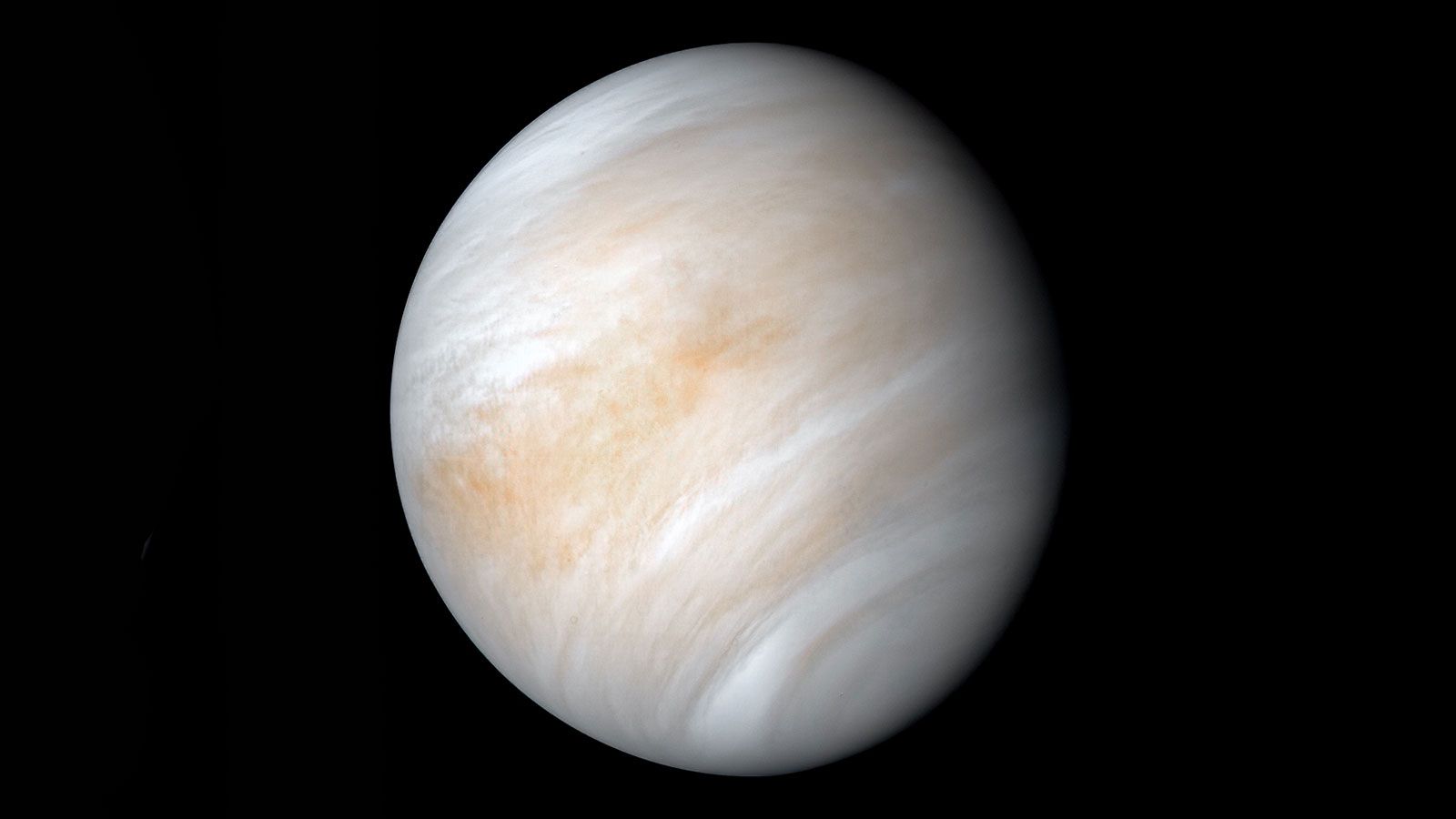🔭 Venus could bombard us from a distance: an invisible threat to Earth
Follow us on Google News (click on ☆)
Venus's co-orbital asteroids follow an orbit around the Sun synchronized with that of the planet, completing a full revolution in the same time frame. This characteristic generally keeps them aligned with the Sun in the sky, making them extremely difficult to observe from Earth. Unlike asteroids in the main belt located between Mars and Jupiter, these objects evolve in a zone where solar brightness overwhelms any attempt at direct observation. Only very specific conditions, such as certain orbital positions during dawn or dusk, could allow for their observation.

Venus photographed in the darkness of space
Credit: NASA/JPL-Caltech
Simulations conducted by Valerio Carruba and his team at São Paulo State University reveal that these hidden asteroids could reach significant sizes, up to 300 meters (about 1,000 feet) in diameter. Their study, published in Astronomy & Astrophysics, combines analytical models with long-term orbital integrations to understand the behavior of these celestial bodies. The nature of their orbits, influenced by gravitational forces in this region of the Solar System, could lead them to gradually drift toward Earth's orbit.
Current observation instruments, including the new Vera C. Rubin Observatory, face significant limitations in detecting these objects. Even this state-of-the-art observatory could only spot the brightest asteroids if they rise more than 20 degrees above the horizon. Researchers emphasize the need to develop specialized space instruments, such as NASA's NEO Surveyor project, capable of continuously monitoring this region without being hindered by solar glare.
The potential consequences of a collision with one of these asteroids would be catastrophic. An impact would create a crater 3 to 4.5 kilometers (about 2 to 2.8 miles) in diameter and release energy equivalent to several hundred megatons. Valerio Carruba stresses the importance of anticipating these invisible risks in planetary defense strategies, emphasizing that the threat comes not only from what we can see, but worse, from what still escapes our vigilance.
Co-orbital asteroids: invisible companions
Co-orbital asteroids are celestial bodies that share the same orbit as a planet around the Sun, completing their revolution in exactly the same time. This synchronization creates a particular configuration where the asteroid and the planet maintain a constant relative position.
The stability of these co-orbital orbits varies considerably according to their eccentricity, that is, the deviation from a perfectly circular orbit. More circular orbits keep asteroids closer to the Sun, making them even more difficult to detect than those with more elliptical orbits.
This particular configuration explains why only about twenty co-orbital asteroids of Venus have been identified so far, while mathematical models suggest the existence of a much larger population.
Planetary defense: anticipating the unpredictable
Planetary defense represents all the strategies and technologies developed to protect Earth from impacts by celestial objects. This scientific discipline combines astronomy, physics, and space engineering to identify, track, and potentially deflect dangerous asteroids.
Current approaches mainly focus on early detection through networks of ground-based and space telescopes. However, Venus's co-orbital asteroids escape conventional monitoring methods due to their position relative to the Sun.
Scientists are exploring several techniques to deflect a threatening asteroid, including kinetic impact (sending a projectile to alter its trajectory), the use of gravity tractors (spacecraft flying near the asteroid to slightly attract it), or even controlled nuclear explosions.
The effectiveness of these methods crucially depends on the time available between detection and potential impact, which underscores the importance of developing surveillance systems capable of spotting threats long in advance.